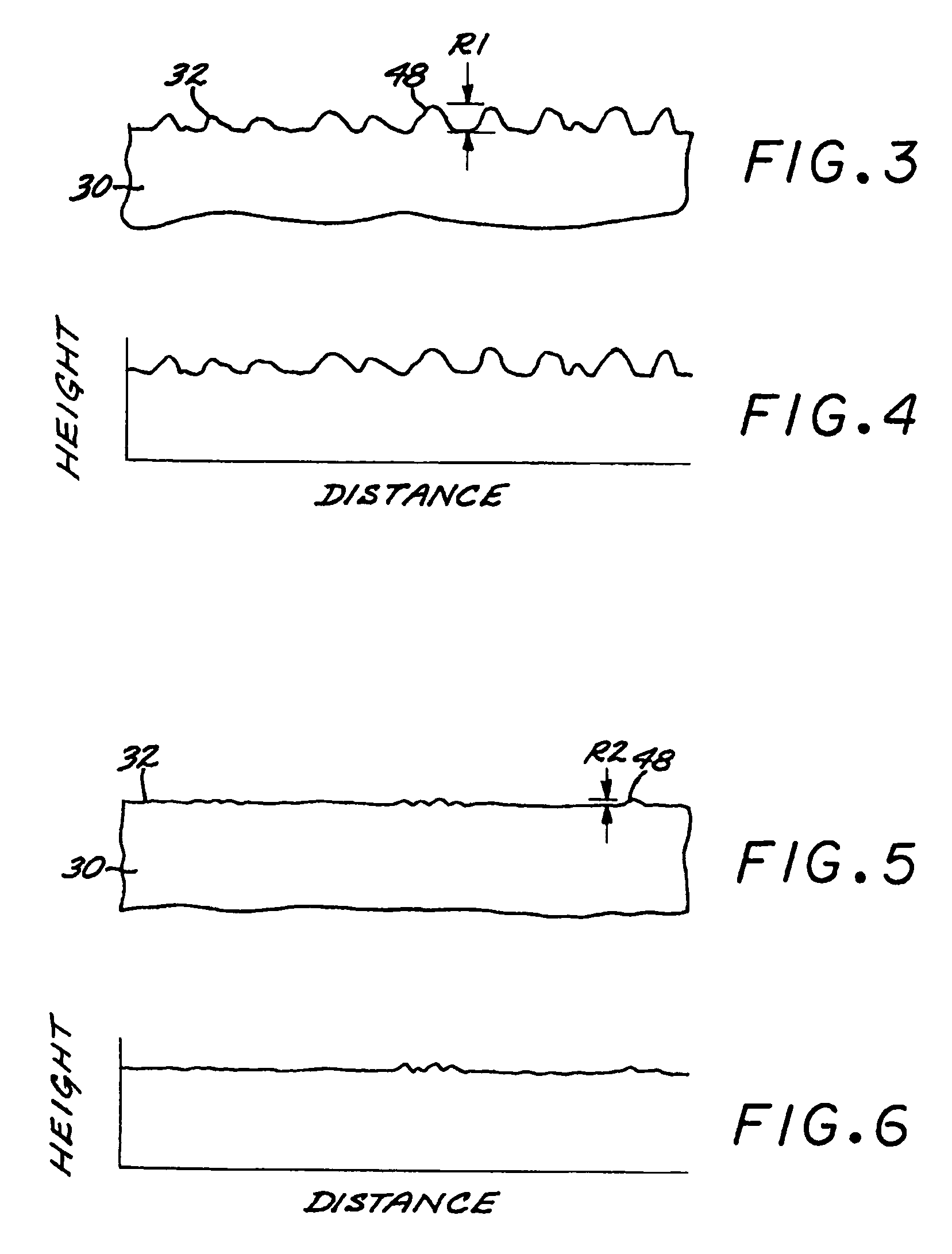Preparation of an article surface having a surface compressive texture
a surface compressive texture and article technology, applied in the field of article surface compressive texture preparation, can solve the problems of affecting the residual compressive stress state, affecting the ultimate performance of the article in its intended application, and degrading the aerodynamic performance of the airfoil, so as to achieve the effect of low surface roughness
- Summary
- Abstract
- Description
- Claims
- Application Information
AI Technical Summary
Benefits of technology
Problems solved by technology
Method used
Image
Examples
Embodiment Construction
[0023]FIG. 1 illustrates a method for preparing a surface, and FIG. 2 depicts an article 30 of the most current interest. The article 30 having an article surface 32 is provided, step 20. In the illustrated embodiment, the article 30 is a gas turbine blade 34. (That is, the article 30 generically is a blade used in a gas turbine engine, but not necessarily in the turbine section. The article 30 may, for example be a compressor blade of the gas turbine engine.) The gas turbine blade 34 has an airfoil 36 including a pressure side 38, against which a flow of gas impinges during service operation, and an oppositely disposed suction side 40. The gas turbine blade 34 further includes a downwardly extending shank 42, and an integral attachment in the form of a dovetail 44, which attaches the gas turbine blade 34 to a gas turbine disk (not shown) of the gas turbine engine. A platform 46 extends transversely outwardly at a location between the airfoil 36 and the shank 42 and dovetail 44.
[00...
PUM
| Property | Measurement | Unit |
|---|---|---|
| residual compressive stress | aaaaa | aaaaa |
| surface roughness | aaaaa | aaaaa |
| surface texture | aaaaa | aaaaa |
Abstract
Description
Claims
Application Information
 Login to View More
Login to View More - R&D
- Intellectual Property
- Life Sciences
- Materials
- Tech Scout
- Unparalleled Data Quality
- Higher Quality Content
- 60% Fewer Hallucinations
Browse by: Latest US Patents, China's latest patents, Technical Efficacy Thesaurus, Application Domain, Technology Topic, Popular Technical Reports.
© 2025 PatSnap. All rights reserved.Legal|Privacy policy|Modern Slavery Act Transparency Statement|Sitemap|About US| Contact US: help@patsnap.com



